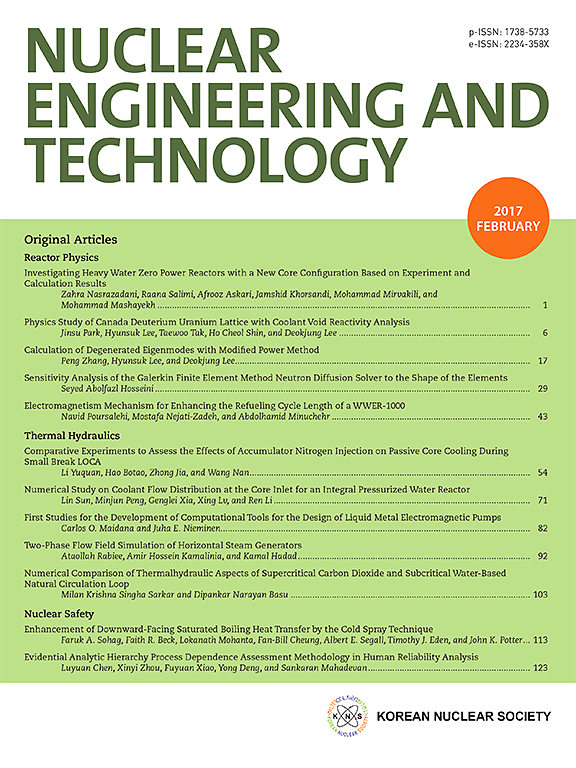Development of real-time path-based 3D dose rate mapping system
IF 2.6
3区 工程技术
Q1 NUCLEAR SCIENCE & TECHNOLOGY
引用次数: 0
Abstract
According to the ALARA principle, workers in radiation field must use dosimeters at working sites to ensure that annual effective dose does not exceed 50 mSv. However, traditional dosimeters assess radiation levels only after post-processing, which lack a real-time monitoring system. To overcome this limitation, a real-time path-based 3D exposure dose mapping system was developed by integrating a survey-meter and a 3D scanner using the SLAM (Simultaneous Localization and Mapping) algorithm. This advanced system allows simultaneous spatial scanning and dose measurement, enabling free movement in complex indoor/outdoor environments. As workers navigate the area, the system generates a point cloud dataset (PCD) of the environment, recording that coordinates and measured dose rates. This dataset is visually presented in real-time, following the worker's path in 3D space. Additionally, a Deep Neural Network (DNN) model was created to produce a 3D dose rate distribution map. By using the path coordinates as input and corresponding doses as output, the model predicts dose rate throughout the entire PCD. These predictions were used to create a 3D map, with color and brightness adjusted based on dose rates. The system was implemented with LiDAR and a Geiger-Müller detector, then successfully tested in preliminary experiments.
求助全文
约1分钟内获得全文
求助全文
来源期刊

Nuclear Engineering and Technology
工程技术-核科学技术
CiteScore
4.80
自引率
7.40%
发文量
431
审稿时长
3.5 months
期刊介绍:
Nuclear Engineering and Technology (NET), an international journal of the Korean Nuclear Society (KNS), publishes peer-reviewed papers on original research, ideas and developments in all areas of the field of nuclear science and technology. NET bimonthly publishes original articles, reviews, and technical notes. The journal is listed in the Science Citation Index Expanded (SCIE) of Thomson Reuters.
NET covers all fields for peaceful utilization of nuclear energy and radiation as follows:
1) Reactor Physics
2) Thermal Hydraulics
3) Nuclear Safety
4) Nuclear I&C
5) Nuclear Physics, Fusion, and Laser Technology
6) Nuclear Fuel Cycle and Radioactive Waste Management
7) Nuclear Fuel and Reactor Materials
8) Radiation Application
9) Radiation Protection
10) Nuclear Structural Analysis and Plant Management & Maintenance
11) Nuclear Policy, Economics, and Human Resource Development
 求助内容:
求助内容: 应助结果提醒方式:
应助结果提醒方式:


